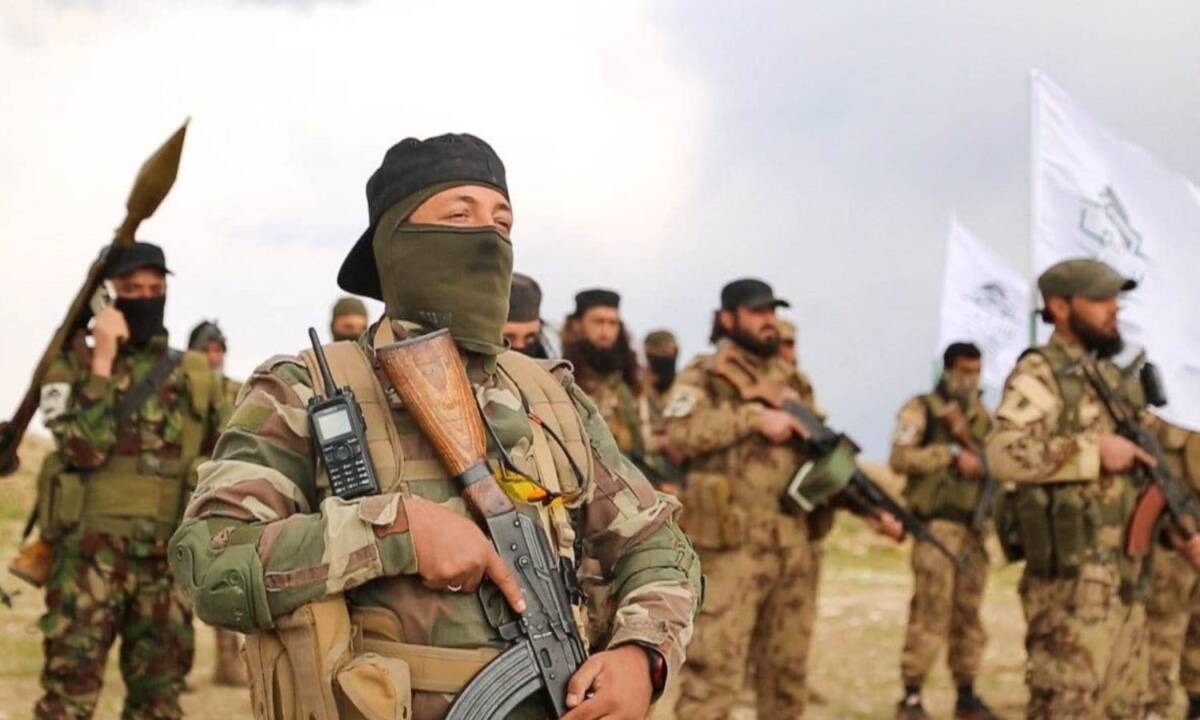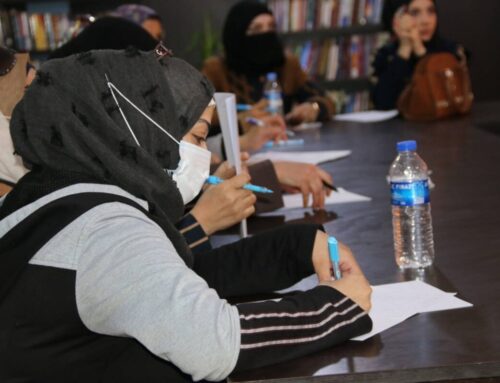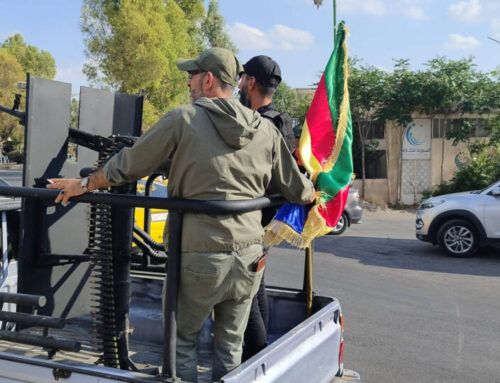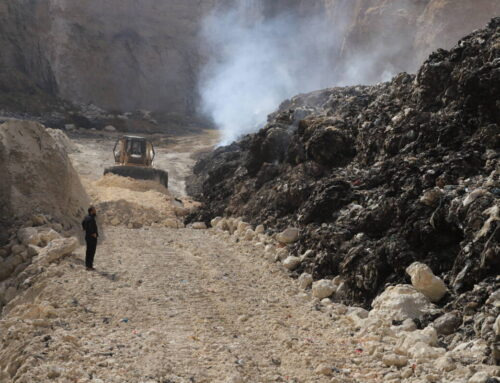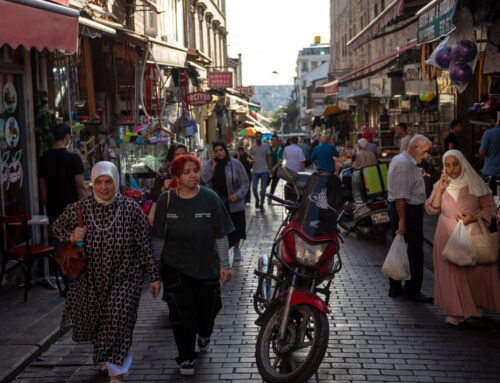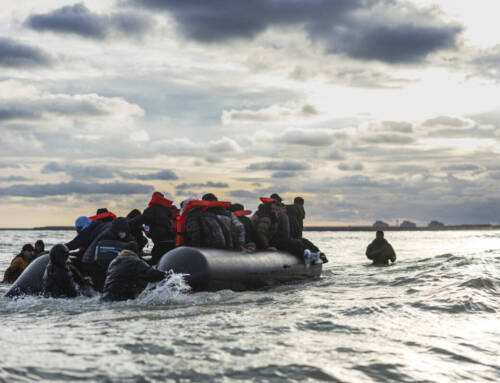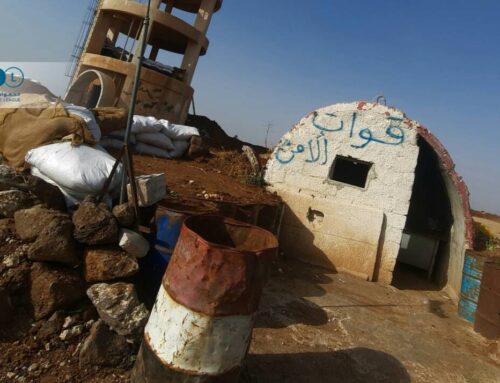‘Resurrection’: HTS returns to southern Syria
Six years after HTS forces left southern Syria, the hardline faction is back in Daraa province in the form of small groups made up of former fighters and new local recruits.
27 May 2024
PARIS — Six years after its forces left for northwestern Syria following a settlement agreement that saw Damascus regain control of the south, Hayat Tahrir al-Sham (HTS) has returned in the form of small groups deployed in cities and villages across Daraa province.
In summer 2018, factions in the Syrian opposition’s Southern Front reached a Russian-sponsored agreement with the regime that saw fighters and civilians who rejected the deal leave for the north. Most members of HTS joined the convoy and went into internal exile in Idlib.
Yet over the past three months, HTS activity has reappeared in Daraa province. Groups made up of former HTS personnel and new recruits—young local men—have carried out a number of assassinations targeting drug dealers and traffickers, as well as members of regime forces and affiliated militias, local sources told Syria Direct.
The emergence of these groups, which identify themselves as belonging to HTS, raises many questions. What goals does HTS have in the south? To what extent do these new groups take orders from HTS’ central command in Syria’s northwestern Idlib province, led by Abu Muhammad al-Jolani?
These questions are particularly significant given that HTS decided to withdraw the bulk of its leadership from Daraa as far back as 2016—two years before the 2018 settlement agreement. The south is also nominally controlled by Damascus, alongside the presence of the settlement factions made up of forces that were part of the Southern Front before the settlement, and whose authority and ideology differs from HTS.
Resurrection in the south
Two months ago, in a city in northwestern Daraa, a small group of armed young men stood in the middle of a street, blocking traffic. They chanted for HTS, claiming to belong to it, and said the group had returned once more to the city, two residents told Syria Direct. Both residents spoke on condition of anonymity and asked that the city not be named, for fear of possible danger to civilians living there.
The incident came as a shock to the people of the city. They fear the return of HTS could come alongside “assassinations of those opposed to it” and that “the regime will use their appearance as a pretext to storm the city,” Abu Qassim, a 30-year-old resident, told Syria Direct.
Other small armed groups claiming to belong to HTS have popped up at eight points in Daraa, concentrated in the north, east and west of the province, five military and civilian sources told Syria Direct.
In the summer of 2016, Jabhat al-Nusra—Al Qaeda’s former Syrian affiliate and the predecessor of HTS—decided to withdraw most of its leadership from Daraa province to northwestern Syria. They left through a murky agreement with the regime, as the convoy crossed through Damascus-held territory to reach Idlib.
The commanders who left at the time included Abu Maria al-Qahtani, the number two in HTS, who was assassinated last month in Idlib. Abu Julaybib, the former emir of the Daraa sector, and Abu al-Baraa al-Jazrawi, the former emir of Quneitra, also headed north.
Following this major withdrawal, small numbers of HTS forces, made up of men from Daraa who preferred to stay in their towns, remained, although their activities were limited. Some of those fighters form the nuclei of the current HTS groups that reemerged in recent months.
Abu Abdullah (a pseudonym) joined HTS in Daraa’s northern countryside five months ago. The 19-year-old told Syria Direct he joined seeking “revenge against the regime that killed my father, and victory for the Syrian revolution.” Abu Abdullah’s father was detained by the Syrian regime in 2012. Six years later, word reached his family that he had been killed “under torture,” he said.
HTS “is the last faction really fighting the regime, after the Daraa factions joined it,” Abu Abdullah said. He came into HTS, alongside 15 other young men around his age, through an individual known as Abu Hafas. Three separate sources indicated that Abu Hafas, a former HTS commander from Daraa, is responsible for recruiting operations and managing groups in northern Daraa from his residence in Idlib.
Syria Direct reached out to Abu Hafas for comment, but he refused to provide a statement unless he was provided with the names of sources in Daraa who were contacted for this report.
“HTS is repositioning itself on the Syrian map, trying to fill a security vacuum in a geographical spot that is important to all the parties to the conflict.”
An HTS return to Daraa, an area previously of lesser importance to HTS, can be viewed as “a new stage of resurrection for a faction that decided to partially withdraw before the [2018] settlement, and fully withdraw with its signing,” Abu Muhammad, a former opposition commander who lives in northern Daraa, said.
“HTS is repositioning itself on the Syrian map, trying to fill a security vacuum in a geographical spot that is important to all the parties to the conflict,” he told Syria Direct.
Relationship with the 8th Brigade
At three out of eight points in the Daraa countryside where HTS has a presence, small groups affiliated with it are scattered alongside groups from the 8th Brigade. The 8th Brigade, led by former opposition commander Ahmad al-Awda, is currently affiliated with Syrian military security. Three sources, including two military sources, told Syria Direct the formation has provided protection to HTS groups and secured their movements.
Abu Muhammad, the former opposition commander, described the relationship between the HTS groups and the 8th Brigade in the south as one of “mutual benefit.” He suggested “the 8th Brigade provides protection in exchange for them carrying out assassinations and going after targets for the 8th Brigade, such as drug dealers, Islamic State [IS] forces and regime officers.”
Beyond that, “the 8th Brigade has intervened several times to stop the regime from storming suspected HTS headquarters in eastern Daraa,” one former opposition media official said. “The 8th Brigade protects these groups.” Just before regime storming operations, “the brigade got the HTS groups out to safe areas and carried out joint search operations with the regime as a formality,” he said. “The groups returned to their headquarters the next day.”
“HTS is trying to restore its presence in all of the Houran. At this stage, it prefers not to show hostility to the central committees, military security groups and settlement factions.”
Abu Abdullah, the HTS member in northern Daraa, confirmed his group received “assistance and protection in our places of residence and movement,” attributing the relationship to “having a lot in common, most importantly confronting regime agents and drug dealers.”
“HTS is trying to restore its presence in all of the Houran,” Abu Saqr (a pseudonym), a clan notable in Daraa city, told Syria Direct on condition of anonymity for security reasons. “At this stage, it prefers not to show hostility to the central committees, military security groups and settlement factions,” he added. Abu Saqr read the group’s current strategy as “consolidating its presence—because it is still weak in Daraa—while working against IS and the regime and bringing back more of its forces who are in the north back to the Houran.”
Abu Saqr said dozens of HTS members from Daraa who left on the 2018 displacement buses “returned over the past three months.”
Syria Direct made repeated attempts to contact the 8th Brigade’s media office for comment on claims that it has a relationship with HTS groups in Daraa, but received no response by the time of publication.
HTS’ future in Daraa
“HTS’ effort to deploy in Daraa is not surprising,” one researcher on Islamist groups told Syria Direct from his residence in Turkey, requesting anonymity for safety reasons. HTS has “similar activity in Raqqa and Deir e-Zor too, both controlled by the [Syrian Democratic Forces] SDF” in northeastern Syria, he added. In SDF areas, HTS forces “aim to collect information, move money and track the activity of IS, drug dealers and some SDF commanders,” he said.
The researcher added that HTS has “a security branch within its security system, known as the ‘Behind the Lines Branch,’ in reference to the lines of the parties to the conflict. Its task is to gather information.” An HTS presence in the south may be “within this framework,” he said.
In any scenario in which “the regime is ousted from the southern region, HTS is the most prominent candidate to carry out this task,” the researcher went on to say. HTS could also be positioning itself in a place “near Damascus that poses a threat to the regime,” taking advantage of “the collapsed security system—compared to how it was at the start of the revolution—of the regime, Hezbollah and Iran.”
The researcher based his analysis on “a general proposal to again divide up and beleaguer the regime’s control in Damascus,” adding that “HTS is perhaps attempting to anticipate events and position itself at several points outside its borders” in northwestern Syria.
“A large part of HTS’ new members are the sons of martyrs or the detained, who have lived lives of orphanhood and poverty. They have hatred for the regime and the settlement factions, and HTS exploited that well.”
The former commander from northern Daraa did not rule out “a growing HTS presence and expansion in southern Syria,” noting that “HTS has great assets in the north that it can harness to support its presence in the south.” Furthermore, “the security situation and general state of despair among the youth, as well as the deteriorating living situation, are all factors that promote the growth of an HTS presence in the south.”
“A large part of HTS’ new members are the sons of martyrs or the detained, who have lived lives of orphanhood and poverty,” the former commander added. “They have hatred for the regime and the settlement factions, and HTS exploited that well.”
Still, Abu Saqr, the notable in Daraa city, believes a growing role for HTS in the south remains unlikely. “Past experiences of HTS ended in failure, since it is rejected by the factions and the people, and its ideas are not socially accepted,” he said. “There are parties that are still fighting it and preventing it from expanding, as in the case of the Central Committee in western Daraa.”
This report was originally published in Arabic and translated into English by Mateo Nelson.

